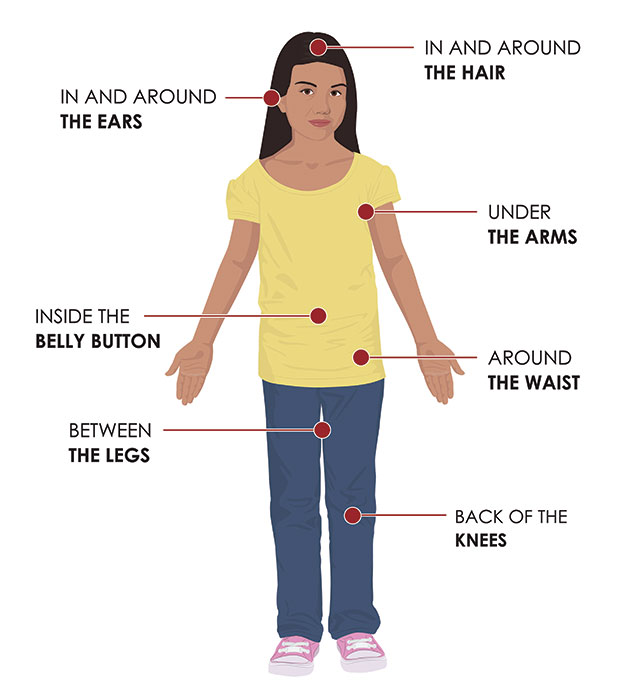How to Lick Those Tics

5 Things the Homeless Do Not Want
March 14, 2019
3 Recipes to Get Dinner on the Table Fast
May 14, 2019Will Lyme Disease Hit Your Family Like it Did Our?
This year I found myself face to face for the first time with the real threat that Ticks bear. My beloved canine, Blaze, found himself infected with Lyme disease. Thankfully, after a round of antibiotics (doxicylelne) he is back to his normal rambunctious self. It did make me realize how important it is to know what to look for in our four-legged friends. We need to know how to protect not only ourselves, but also our pets, because these bothersome pests don’t care if you are canine, feline, or human.

Ticks can be as small as the size of a poppy seed. Take the CDC challenge below and see if you can you spot all 5 ticks in their photo? Deer ticks are so tiny they are the same size as a poppyseed, making them even harder to spot, especially on dark coated dogs. I think it’s safe to say it will be a while before I’ll be enjoying another poppy seed muffin.

Tick season runs from spring through early fall in Virginia and is already well under way. Check out this interactive map that is updated weekly for current tick activity in Virginia, as well as across the entire United States.
Lyme disease in dogs does not look the same as it does in humans.
Only 5-10% of dogs infected with Lyme disease ever show symptoms. This makes it very difficult to detect. Lyme disease is caused by the spirochete (bacteria) of the Borrelia Burgdorferi species (deer tick) that has become infected with the bacteria after feeding on infected mice or other small animals. There are other diseases, besides Lyme, that Ticks carry as well, that we need to be aware. Some of these diseases also affect humans, such as Rocky Mountain Fever. Additional diseases that only affect dogs are ehrlichiosis and anaplasmosis.
Click here to find more about Rocky Mountain Fever in Dogs. What tipped us off about Blaze was that he suddenly began limping and then quickly progressed to not being able to walk at all. Here is a list of some of the symptoms to be aware of both for your pet and for yourself.
Human vs. Canine Symptoms
| Dogs | Humans |
| Shifting Lameness that moves from leg to leg | Rash (occurs in 70-80% of infected people.) |
| General feeling of malaise | Fever |
| Depression and Lack of Appetite | Fatigue |
| Stiff walk with an arched back. | Headache |
| Fever | Neck Stiffness |
| Sensitivity to touch | Swollen Lymph Nodes |
| Difficulty Breathing | Chills |
| Rare: Heart abnormalities or Nervous system complications | Rare: Disturbances in heart rhythm, Eye inflammation, Liver inflammation, and severe fatigue |
Diagnosis
Diagnosis in Dogs and Humans generally require a blood test. Dogs may need some additional tests such as a urinalysis, fecal exam, or even X-rays or other tests specific to diagnosing Lyme disease. Fluid from affected joints may also be drawn.
Treatment
Outpatient treatment is standard unless patient is unstable. The treatment length varies but is generally 10-21 days for humans and 28-30 days for dogs. A longer amount of time may be necessary. You should expect to see improvement in your Dog within five days after treatment starts. If there is no improvement your vet will want a reevaluation.
Prevention
| In Dogs | In Humans |
| Keep out of tick-infested environments | Wear long pants and long-sleeve shirts when outdoors |
| Check their skin daily and remove ticks by hand. | Use insect repellents with a 20 percent or higher concentration of DEET-don’t use on children under two (Lemon eucalypts can also be used on ages 3 and up.) |
| Use a prescription flea and tick collar or a topical or oral preventative. | Check your body and your clothing for ticks after being outside. Remove any ticks by hand as soon as possible. |
| Lyme Vaccine (Controversial because it can prompt an incurable variety of Lyme Disease to develop) | Shower within two hours of returning inside. (Reduces the risk of infection.) |
Where to Check

Ticks can be carried into your yard by other animals as well, WebMD had this great tip for protecting your yard:
“If you live next to a wooded area or your neighbor’s yard has overgrown plants, cut back the brush on your side. Then create a gravel or wood-chip border 3 feet wide. This makes it hard for ticks to travel across to your lawn.”
WebMD
As the diseases ticks carry continue to become more prevalent, knowledge about prevention, identification, symptoms and removal are our most important weapons to fight back.
If you want to know an easy way to remove a tick from your dog, click here.
For humans, click here.




